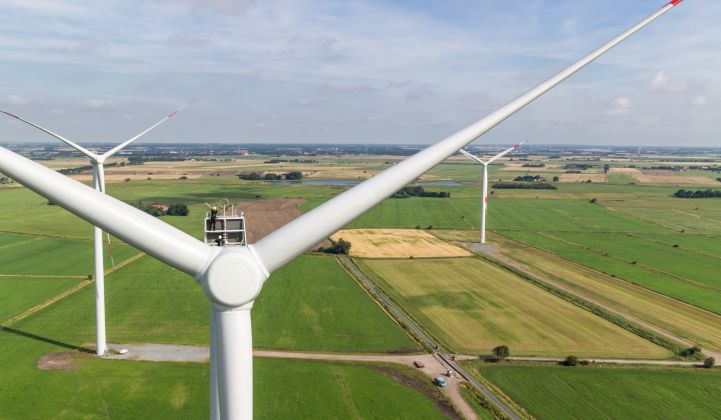Wind turbine OEM Siemens Gamesa is cutting 266 jobs in Spain with the closure of two factories, it announced on Tuesday, with the falling appetite for smaller wind turbines cited as the chief cause.
The facilities in Cuenca, in central Spain, and La Coruña in the north, are both unviable, according to the company. The La Coruña manufacturing plant has no Spanish orders at all for 2021 for its 2.X-114 model, according to Siemens Gamesa. The Cuenca repair facility has also become uncompetitive, according to the firm, as a result of the growing preference to replace rather than repair smaller wind turbines and the site’s inability to handle larger blade sizes.
The latest generation of Siemens Gamesa onshore turbines has a rated capacity of 5.8 megawatts and rotor diameters of 155 and 170 meters compared to the 114-meter diameter rotors produced in La Coruña.
The company will offer severance packages to 215 employees in La Coruña and 51 in Cuenca. Negotiations with labor unions will begin this week.
"We urgently need to return to the path of profitability, and the only way to do it is by applying measures such as these, and those ones already carried out in our Onshore business in the last year and a half,” Lars Krogsgaard, CEO of Siemens Gamesa’s onshore business, said in a statement.
“We have analyzed all the options but concluded there is no alternative. These are tough measures, but necessary to put the company back on track and guarantee its sustainability and the employment of the more than 24,000 employees of Siemens Gamesa, around 4,400 of them in Spain."
Smaller wind factories face challenges as turbines grow
The shift to larger turbines means plants that lack the space for bigger components and the tools required to make them will face a difficult future.
In 2021, less than 10 percent of installed wind projects will use blade sizes of 50 to 59 meters like those made in La Coruña, according to Shashi Barla, Wood Mackenzie's principal analyst for the global wind supply chain.
That segment of the market "is declining,” said Barla in an interview, “and in probably three years from now, it's disappearing.”
The ongoing use of shorter blades is largely restricted to the U.S., where safe-harbored projects with federal Production Tax Credits lined up are essentially being built using plans from 2016. Other markets with limiting permitting conditions, such as Poland, are still installing smaller turbines.
Siemens Gamesa continues its evolution
While the news is a blow for the communities and employees affected, it is far from surprising.
Siemens Gamesa has seized market leadership for the offshore wind sector and has been growing its profitable service division too, but its onshore unit has been racking up losses.
In June last year, it replaced CEO Markus Tacke with Andreas Nauen, who had been heading up the ranks in the offshore wind business.
Speaking on his first investor conference call in July, Nauen said he would apply the best practices of its successful units companywide.
“I'm very confident that we can turn around onshore and then be a successful company in total — no doubt," Nauen said. "We have a strong order backlog. [...] We also have robust finances. We have leading technology, and our people are also committed to making Siemens Gamesa a winner again."
Vestas readies layoffs as part of offshore integration
In addition to the news from Siemens Gamesa, market-leading turbine manufacturer Vestas revealed it would be making 220 layoffs, though the move has nothing to do with shifts in technology.
Instead, it's the result of its decision to bring its offshore wind turbine business in-house, a move revealed in late October. The transaction saw Vestas buy out Mitsubishi Heavy Industries (MHI) from the MHI Vestas partnership. MHI took a 2.5 percent stake in Vestas in return, valuing its share of the offshore joint venture at around €709 million ($832 million) at the time.
“Since we announced the agreement to acquire MHI Vestas Offshore Wind, we have meticulously planned how we can build a united and strong Vestas organization that can lead and scale up in both onshore and offshore wind,” Henrik Andersen, group president and CEO of Vestas, said in a statement.
“It is never easy to make such a decision or say goodbye to good colleagues, but integrating and simplifying two companies inherently creates overlaps between functions, and it’s therefore necessary if we want to create a competitive and scalable organization,” he added.




